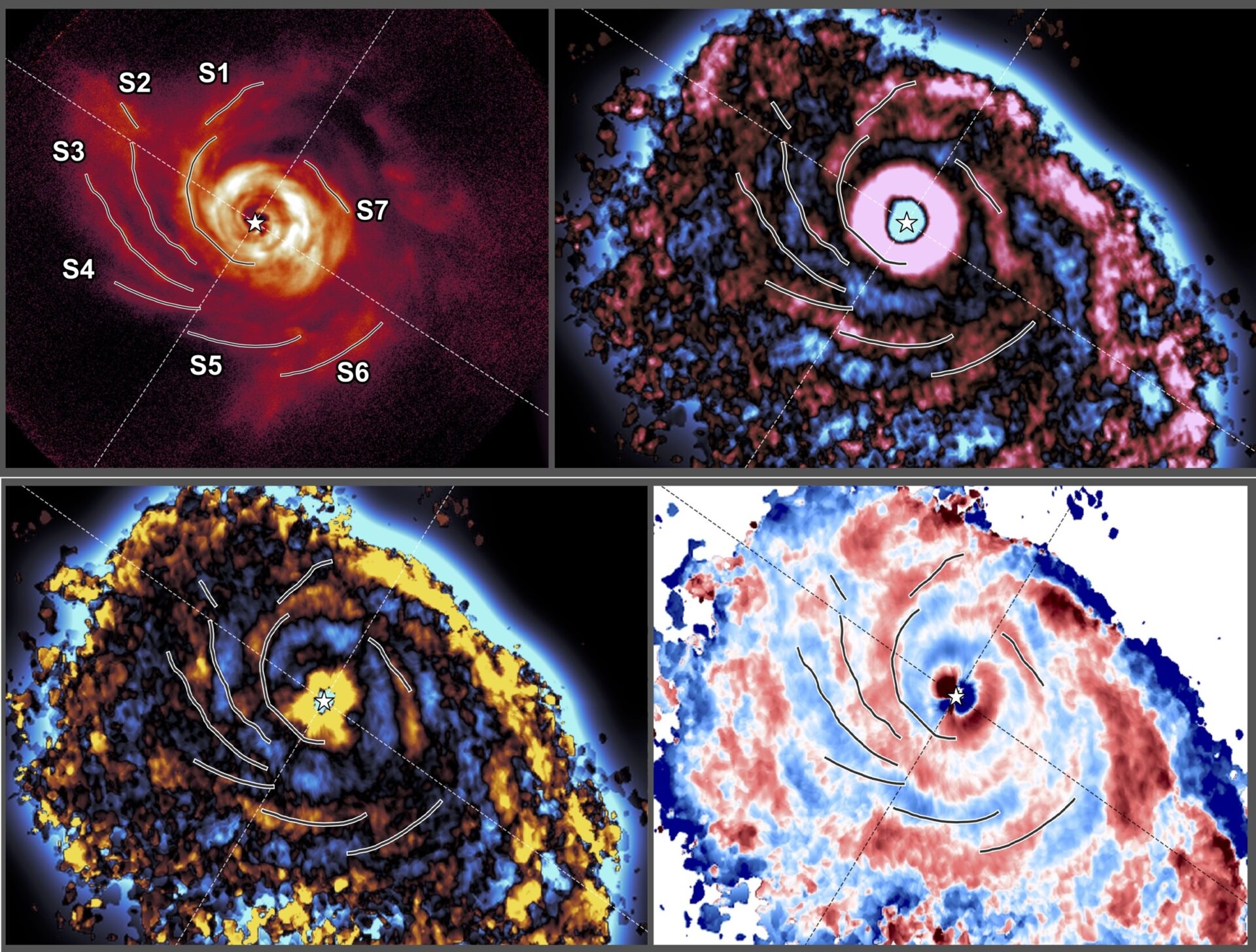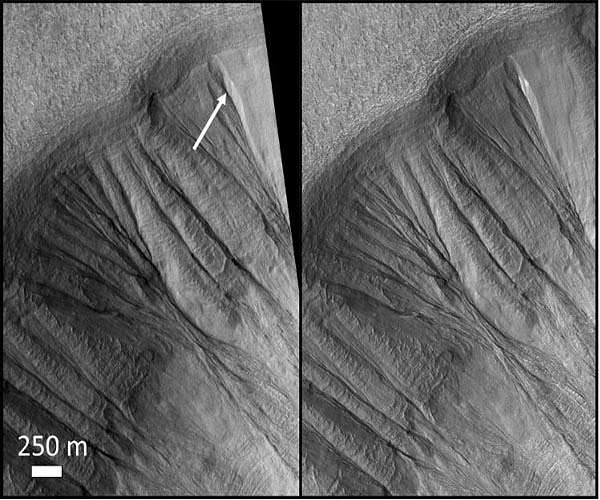According to Nebula Theory, stars and their systems of planets form when a massive cloud of gas and dust (a nebula) undergoes gravitational collapse at the center, forming a new star. The remaining material from the nebula then forms a disk around the star from which planets, moons, and other bodies will eventually accrete (a protoplanetary disk). This is how Earth and the many bodies that make up the Solar System came together roughly 4.5 billion years ago, eventually settling into their current orbits (after a few migrations and collisions).
However, there is still debate regarding certain details of the planet formation process. On the one hand, there are those who subscribe to the traditional “bottom-up” model, where dust grains gradually collect into larger and larger conglomerations over tens of millions of years. Conversely, you have the “top-down” model, where circumstellar disk material in spiral arms fragments due to gravitational instability. Using the Atacama Large Millimeter/submillimeter Array (ALMA), an international team of astronomers found evidence of the “top-down” model when observing a protoplanetary disk over 500 light-years away.
The team was led by Jessica Speedie, an astronomy and astrophysics Ph.D. candidate at the University of Victoria. She was joined by colleagues from the Kavli Institute for Astronomy and Astrophysics (KIAA-PKU), the Center for Simulational Physics (CSP-UGA), the Cambridge Institute of Astronomy, the Centre de Recherche Astrophysique de Lyon (CNSA-CRAL), the Institute of Astronomy and Astrophysics (ASIAA), the Department of Earth, Atmospheric, and Planetary Sciences (MIT EAPS), the National Astronomical Observatory of Japan (NAOJ), the European Southern Observatory (ESO), and multiple universities and observatories.
The paper that details their research, “Gravitational instability in a planet-forming disk,” was recently published in the journal Nature.
Located in the Atacama desert in the Chilean Andes, ALMA is the largest radio telescope in the world dedicated to studying the parts of the Universe that are otherwise invisible to astronomers. This includes cold dust clouds in space, protoplanetary disks, and some of the earliest galaxies in the Universe, which are only visible at millimeter and submillimeter wavelengths. Using ALMA, Speedie and her colleagues observed the well-characterized protoplanetary disk around AB Aurigae, a young star system (4 million years old) located about 530 light-years from Earth.
The star is a pre-main sequence A-type star (blue-white) approximately 2.5 times the size of our Sun and about 2.4 times as massive. Beginning in 2017, scientists at ALMA began observing the star’s protoplanetary disk to learn more about planet formation in young star systems. Since then, astronomers have observed several developing protoplanets forming in AB Aurigae’s disk, as well as a gas giant nine times the mass of Jupiter that was confirmed in 2022. These appear as clumps within the protoplanetary disk’s spiral arms, rotating counterclockwise around the star.
The detection of these bodies around such a young star raised doubts about the “bottom-up” process. According to this model, these protoplanets did not have nearly enough time to become as large as they have. Along with her PhD advisor Ruobing Dong, Speedie and their team were determined to study how the gas in the system’s vast spiral arms is moving. ALMA’s sensitivity and high velocity resolution was crucial to that task and enabled the team to probe the gas deep within the disk and measure its motion precisely.
Dr. Cassandra Hall, an Assistant Professor of Computational Astrophysics at the University of Georgia was also a co-author on the research. Four years ago, Hall led a study where she and her colleagues (which included Dong and other members of Speedie’s team) simulated how a gravitationally unstable disk would behave. As she indicated in a NRAO press release:
“Disks that are gravitationally unstable should have distinctive ‘wiggles’ in their velocity field, unlike disks that are stable. Back in 2020, we performed some of the most advanced simulations in the world to predict the existence of this hallmark signature of gravitational instability. It was clear, it was testable, and it was a bit scary – if we didn’t find it, then something had to be very, very wrong with our understanding of these disks.”
Spiral arms form in a protoplanetary disk when the disk-to-star mass ratio is sufficiently high. Over time, changes in density lead to changes in gravity, which causes variations in the velocities of gas in and around the spiral arms. These variations in velocity are seen as “wiggles,” and the magnitude can be used to infer the mass ratio between the host star and the material in its disk. Using ALMA’s array of radio antennas, Speedie and her team mapped the velocity of carbon monoxide isotopes within the disk’s spiral arms and looked for indications of the predicted “wiggles.”
These measurements yielded a three-dimensional rectangular “data cube” that mapped gas velocity and position within the protoplanetary disk along the observatory’s line of sight. As is customary with ALMA’s interferometry measurements, the data was parsed into “slices” (or strategically oriented cuts), allowing Speedie and her team to conclusively identify the velocity wiggle indicating gravitational instability. This constitutes the first direct observational confirmation that the “top-down” pathway to planet formation is correct.
What’s more, it indicates that planetary systems may form much faster than previously thought, which could have significant implications for astrogeology and exoplanet research. As Speedie explained, Hall’s work, ALMA’s sensitivity, and the quality data products it created for them were what made this discovery possible:
“This is a classic science story of, ‘we predicted it, and then we found it’. The Hall-mark of gravitational instability. We worked with one of the deepest ALMA observations taken with such high-velocity resolution toward a single protoplanetary disk to date. The ALMA data provides a clear diagnosis of gravitational instability in action. There is no other mechanism we know of that can create the global architecture of spiral structure and velocity patterns that we observe.”
In the near future, Speedie and her colleagues plan to continue using ALMA to learn more about how planetary systems form around young stars. As part of the NFS/NRAO ALMA ambassador program, Speedie is training alongside other postdoctoral students and early career astronomers to share ALMA’s resources and capabilities with the wider astronomical community.
Further Reading: NRAO, Nature





No comments! Be the first commenter?